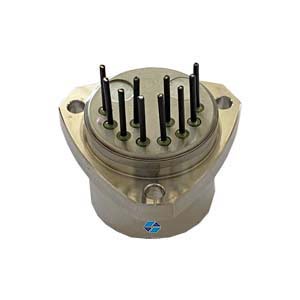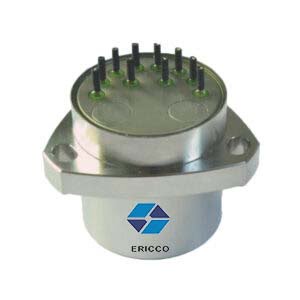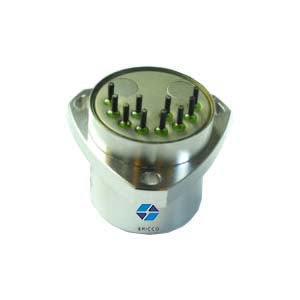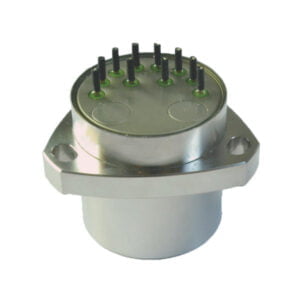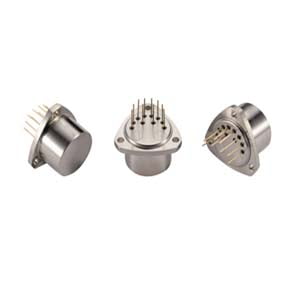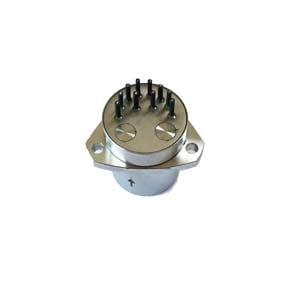As a mature high-precision inertial accelerometer, quartz flexure accelerometer can output acceleration information from 10^-5 g to tens of g. In order to ensure the overall accuracy of the system, the corresponding accelerometer acquisition circuit should try to reduce the error introduced by itself and improve the performance of data acquisition.
Since quartz flexure accelerometers use analog control to output current signals, modern data acquisition systems require digital signals. Thus, it is necessary to convert these analog current signals into digital signals. With the improvement of the accuracy of quartz flexure accelerometers, designing high-precision analog-to-digital conversion circuits becomes particularly important to accurately restore the accelerometer's precision without distortion.
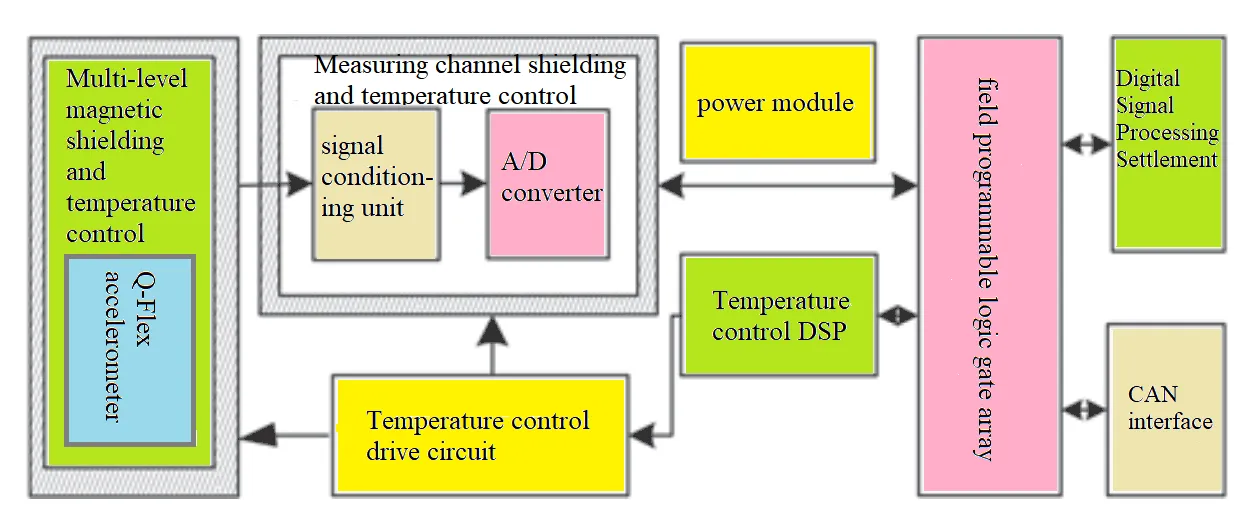
Currently, there are two methods to achieve this analog-to-digital conversion: A/D converter conversion and conversion through conditioning the current signal to a frequency signal, and then performing frequency counting to achieve analog-to-digital conversion, known as I/F conversion.
When using A/D converter conversion, a current-voltage conversion stage is required. To improve the performance of the accelerometer data acquisition circuit, as the first stage of the accelerometer acquisition system, the error caused by the current-voltage conversion stage cannot be ignored. Choosing the appropriate conversion method plays an important role in improving the accuracy of the entire inertial system.
In the current-voltage conversion link, the need for precision low-temperature drift sampling resistor load, which will bring about the load effect, the load effect refers to the current, voltage conversion brought about by the shunt effect of the accelerometer output current, which not only affects the accuracy of the conversion, but also affects the conversion rate.
The commonly used current-voltage conversion methods include direct conversion, instrument operational amplifier conversion, and current-voltage converter. Below is a comparative analysis of these three conversion methods:
1.Direct conversion
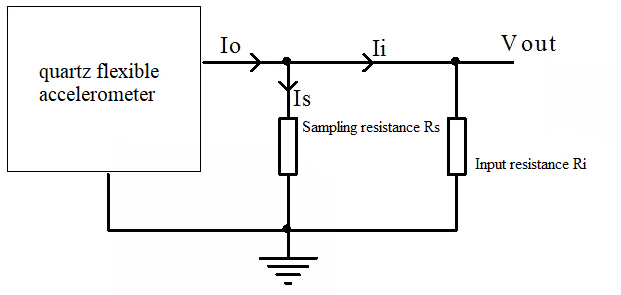
Note: The input resistance Ri is the equivalent impedance of the passive low-pass filter or the input impedance of the active low-pass filter.
According to Kirchhoff's current law, Io=Is+Ii, which will make the output voltage Vout smaller than the theoretical value.
actual measurement:

When the input resistance Ri is smaller, the output voltage deviation is larger.
The ratio of the actual measurement to the theoretical measurement is:

2.Instrument operational amplifier conversion
Similarly, the instrumentation op-amp conversion can be equated to the impedance equivalent diagram of Fig. 4
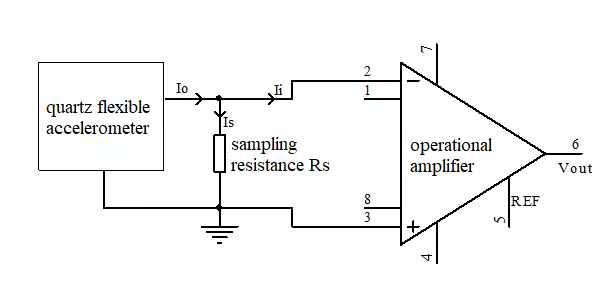
When using instrument operational amplifier conversion, the device selection on the conversion accuracy is greatly influenced by the common instrument operational amplifier input resistance of a few hundred MΩ, and high-performance instrument operational amplifier input impedance can reach 10GΩ ~ 100GΩ, at this time, it can be considered that the conversion accuracy reaches the ideal value.
In addition, the instrumentation operational amplifier can be zeroed through the REF terminal (low impedance input), reducing the system zero position, improve measurement accuracy.
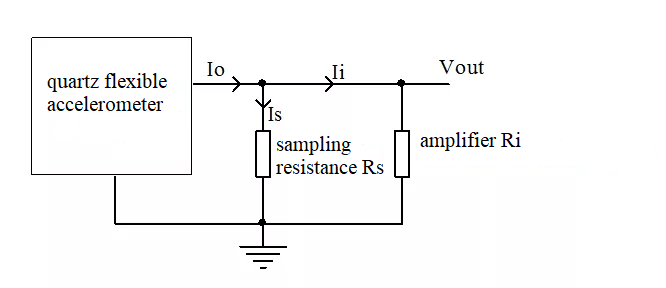
3.Current-voltage converter
Since the input out-of-phase current of the high-precision operational amplifier is very small, we can consider that Ii=Io, so the current-voltage converter can eliminate the influence of the error brought about by the load effect, and the conversion accuracy is close to 100%.
When using the current-voltage converter conversion method, the output terminal L of the meter is always working in the "virtual ground" point, which can improve the ability of the meter to resist vibration and shock, and the linear range of the meter becomes larger, so as to enhance the survivability of the meter in the harsh environment.
The use of current-voltage converter, the need to choose a small out-of-phase current, high slew rate, the output current ability of the operational amplifier, in addition to the current-voltage converter can play the role of low-pass filter, in the acceleration of the output of the low-frequency range, the choice of the appropriate resistance and capacitance, it can be ignored on the output of the impact of the same time as playing the role of a low-pass filter.
In summary, the direct conversion error is too large to be recommended, differential amplifier conversion and current-voltage converter can eliminate the load effect, and less impact on sensitivity. In particular, the ER-QA-03C has dimensions of Ф18.2X23mm, with a scale factor of 1.0±0.2 mA/g. The zero offset repeatability of the ER-QA-03C1 series is ≤15 μg, and the scale factor repeatability is ≤15ppm. In addition to aerospace applications, it can also be used for static and dynamic acceleration measurements.
More Technical Questions
1. Parameters to Evaluate Performance of Quartz Flexure Accelerometers
2. Factors Affecting the Stability of Q-Flex Accelerometers
3. Structure Design of High Precision Quartz Flexible Accelerometer
4. In-Depth Exploration: What Exactly is Satellite Timing?
5. Methods to Maintain the Long-Term Performance of Quartz Flexure Accelerometers
6. Analysis of Temperature Characteristics of Quartz Flexible Accelerometer
Products in Article
